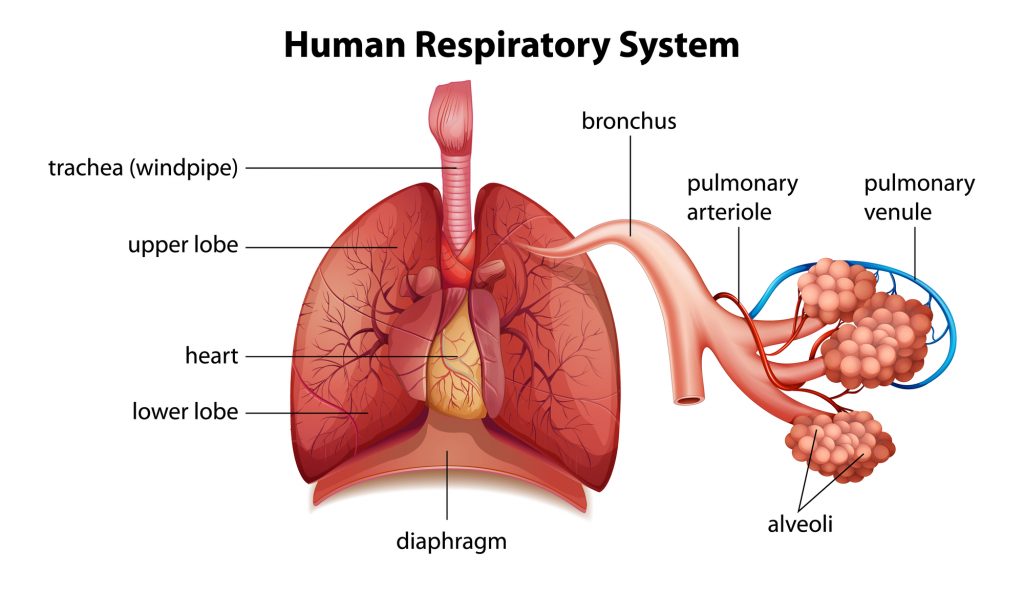Understanding your respiratory system may help you understand Alpha-1 lung disease better. So, let’s take a quick look at what it is, and what it does.
Download Your Respiratory System — What It Is, and How It Works as a PDF.
How breathing works
When you breathe in (inspiration), air travels through the respiratory passages, exchanging oxygen for carbon dioxide. When you breathe out (expiration), you exhale carbon dioxide back into the air.
You don’t have to think about doing this. It just happens. Your respiratory muscles contract and relax, moving air in and out of your lungs. That’s where the exchange of gases between the air and your blood takes place.
The parts of your respiratory system
The upper airway is made up of your nose, mouth, pharynx, and larynx. They warm, filter, and moisten the air you breathe. This protects your lower airway from foreign substances.
The lower airway is made up of your
- trachea (windpipe)
- mainstem bronchi
- secondary bronchi
- bronchioles
- terminal bronchioles
Air moves into and out of your lungs through these structures.
Each terminal bronchiole ends in clusters of structures made up of respiratory bronchioles, alveolar ducts, and alveolar sacs. The exchange between oxygen and carbon dioxide takes place in the alveoli (air sacs).
The mucociliary system helps protect your lower airway. It produces mucus, which traps foreign particles. Then, hair-like projections called cilia move them to the upper airway. When you cough or sneeze, you expel them from your body.
Oxygen and your circulatory system
Circulating blood delivers oxygen to all the cells in your body. The amount of oxygen that reaches the cells depends on several factors, including:
- How much oxygen you have in your blood
- How much hemoglobin (the principal oxygen carrier) you have in your blood
- The condition of your blood vessels
- How well your heart pumps blood through the body
When any of these factors are affected by disease, the levels of oxygen and carbon dioxide may become unbalanced.
Breathing, your brain, and your respiratory system
Located in your brain stem, the medulla oblongata controls the number of breaths you take per minute (respiration). This part of the brain senses carbon dioxide levels in the blood. It sends impulses to the diaphragm and the intercostal muscles. This makes them contract and relax.
If you injure your medulla oblongata, the diaphragm and intercostal muscles can’t function on their own. This may happen if you have a stroke.
In summary, your respiratory system has many moving parts that must work together to keep you healthy.
For more in-depth information on this topic, please visit the Big Fat Reference Guide (BFRG). If you are enrolled in AlphaNet’s Subscriber Portal, you can access the BFRG here.
Download Your Respiratory System — What It Is, and How It Works as a PDF.

